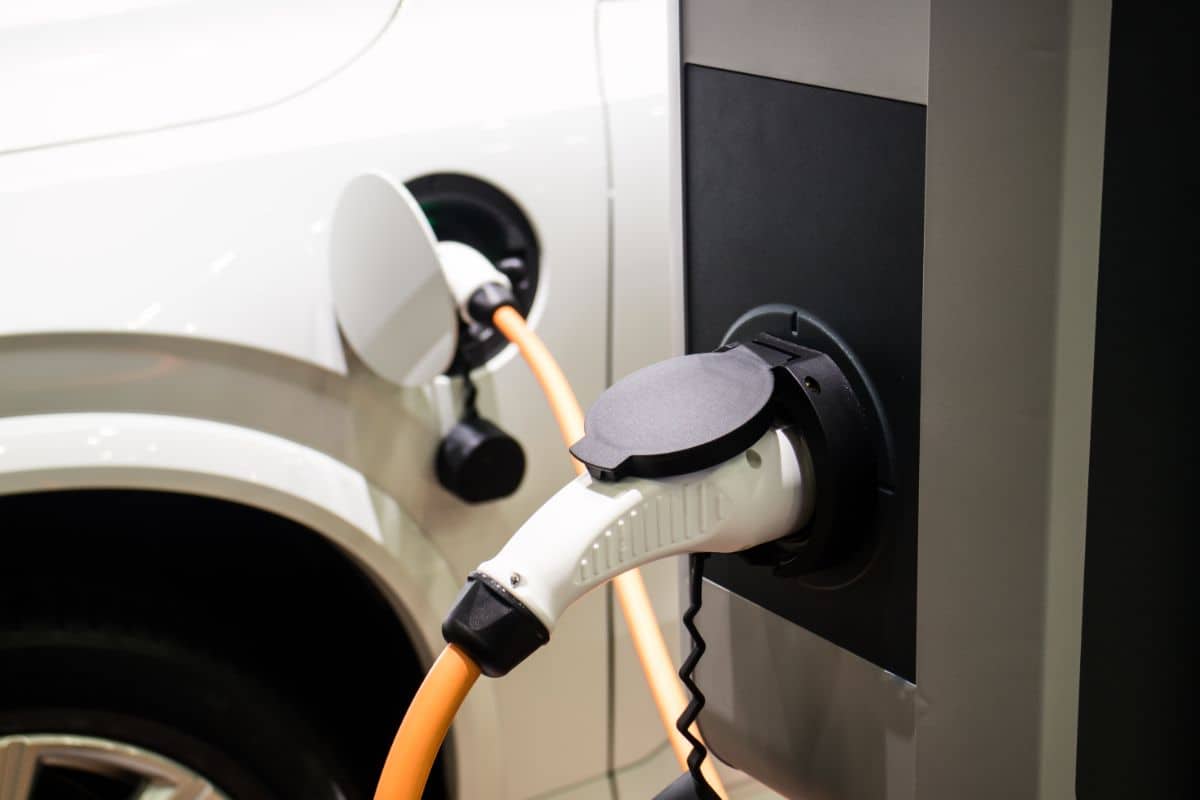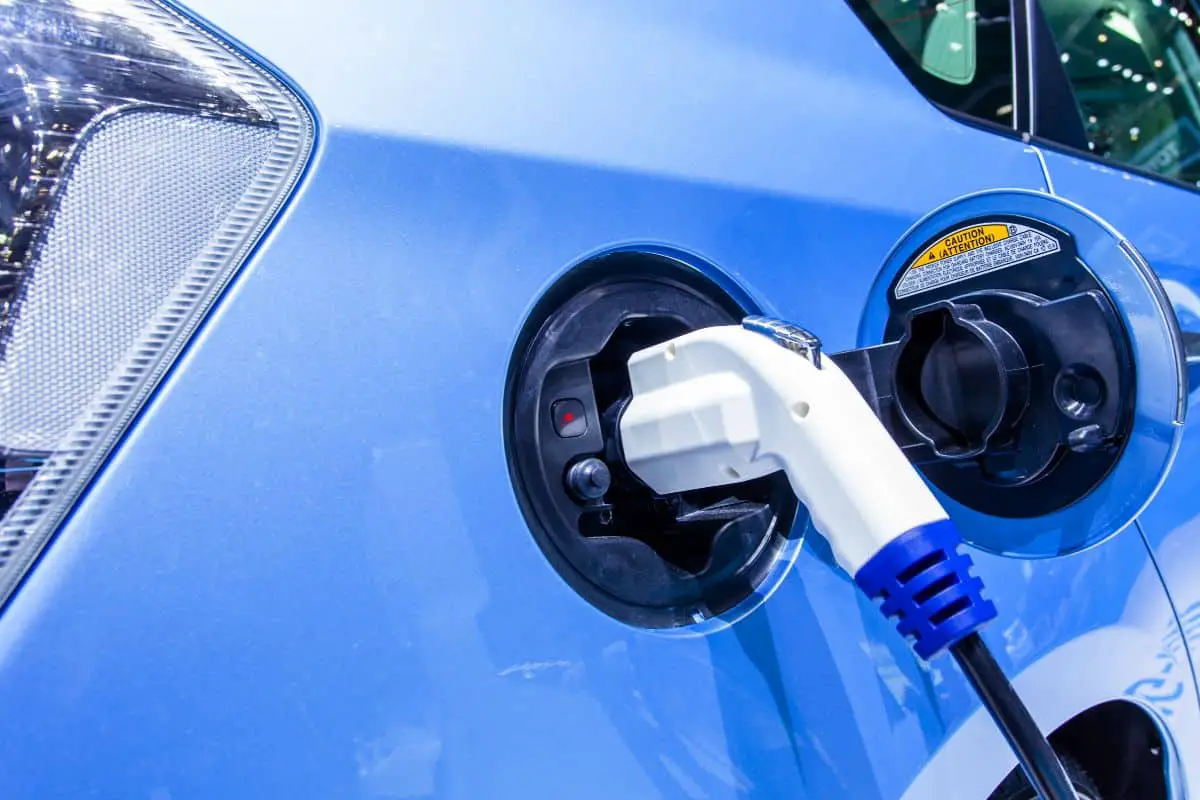There are several different electric and hybrid vehicles on the market, and they can be confusing to differentiate.

So if you are wondering ‘ how plug-in hybrid cars work’ we’re going to guide you through it.
Pondering the switch to a hybrid car? Gain valuable insights from my detailed article on whether a hybrid car is a smart choice.
What Is A Plug-In Hybrid Car?
A plug-in hybrid car uses two sources of power, an internal combustion engine that is powered by gasoline and an electric motor powered by batteries.
The batteries can be charged by plugging the car into a wall outlet, through the ICE engine, or via regenerative braking.
The car will typically run on electric power until the batteries are depleted and then the internal combustion engine takes over.
For people who are concerned about the range that a purely electric car is limited to, a plug-in hybrid car is a good alternative.
How Do PHEVs Work?
Plug-in hybrid vehicles use a wall outlet to charge the batteries in the car.
Unlike standard or conventional hybrid cars that utilize the internal combustion engine to charge the batteries and are not plugged into a power source to recharge.
The same is the case for mild hybrid cars that are also charged from internal processes and not by plugging them in to an external power source.
These standard hybrid vehicles use both sources of energy, alternating between the two depending on which is the most efficient or which has sufficient capacity.
A PHEV or plug-in hybrid vehicle’s battery can be charged from different sources.
Charging can be done at home with a Level 1 120-volt charger from a standard wall outlet or a Level 2 charger with 240 volts.
Alternatively, a PHEV can be charged at a commercial charging station.
The batteries in a PHEV can also be charged through the gasoline or diesel engine within the vehicle via a generator or through the regenerative braking that the car uses.
For more information about how hybrid vehicles are charged, see my article “How to Charge a Hybrid Car“.
Key Components Of A Plug-In Hybrid Car
A fuel tank is required for gasoline or diesel to power the internal combustion engine.
The electric traction motor drives the vehicle’s wheels and is powered by the traction battery pack which stores electricity.
An onboard charger takes the incoming electricity supply via a charge port and converts it to DC power to charge the battery.
A DC converter converts higher-voltage DC power from the traction battery pack to run vehicle accessories and recharge the auxiliary battery.
An electric generator uses the energy from braking and transfers it back to the traction battery pack.
The power electronics controller manages the electrical energy that is delivered by the traction battery and controls the speed of the electric traction motor and the torque that it produces.
A thermal or cooling system maintains the proper temperature range of the engine, electric motor, and other operating components.
The transmission transfers mechanical power from the electric traction motor or engine to the wheels.
Plug-in hybrid cars still have a gasoline or diesel engine so still require an exhaust system, this channels exhaust gasses away from the engine to the tailpipe.
A catalyst within the exhaust system is designed to reduce engine emissions.
What’s The Difference Between A Plug-In Hybrid And Other EVs?

A plug-in hybrid uses a mixture of conventional engine power usually via gasoline and electric power drawn from an onboard battery which is recharged by plugging the vehicle into an external power source.
This type of hybrid will use its electrical power to run the engine until there is no charge left in the battery, only then will it switch to the combustion engine to power the car.
PHEVs use less fuel and produce fewer emissions than regular gasoline-fed cars.
A conventional hybrid uses a standard internal combustion engine alongside an electric battery which is not externally charged, instead, it is charged by the engine or through regenerative braking.
Charging from the engine is done through an electric generator which sends the power to the car’s battery.
Regenerative braking uses the decelerating power to drive the electric motor acting as a generator.
Fully electric cars do not have any kind of internal combustion engine and run purely on battery power which needs to be charged from an external source such as a wall socket or charging station.
Pros And Cons Of Plug-In Hybrid Cars
One of the advantages of a plug-in hybrid car is the ability to make use of two sources of power: gasoline and electricity.
This reduces the stress of range anxiety which people with electric powered cars tend to suffer from.
Simply put, if the battery runs out you don’t need to worry about finding a charging station.
You simply use the car’s combustion engine to continue your journey or find somewhere to plug in.
Another advantage is that while using battery power the vehicle is not producing any emissions so is not polluting the environment.
It is also quieter, so there is less noise pollution too.
A plug-in hybrid will also have a greater range, you can go so far on battery power and complete your journey on gasoline.
There are also some drawbacks to having a plug-in hybrid, one of which is the higher cost. These cars tend to be more expensive than conventional hybrid vehicles.
Of course, you will save money in the long term, but the initial outlay for the car will be higher.
Plug-in hybrids are often in high demand due to their popularity and the versatility that they offer, so it may be more difficult to get your hands on one.
As the vehicle runs on both battery power and gasoline it is necessary to keep both energy sources topped up.
This means having access to charging facilities and regular trips to the gas station.
Final Thoughts
Plug-in hybrid vehicles are a good compromise between a gasoline powered vehicle and a fully electric one.
It produces fewer emissions than a regular car but offers greater range than an electric vehicle.
And with an increasing charging infrastructure, the opportunities for going further in your PHEV can only grow.
- Tesla Charger Installation Cost (Home Setups) - March 1, 2024
- Tesla Phone Key Disconnected (Troubleshooting Guide and Quick Fixes) - March 1, 2024
- Tesla FSD 12 (Explained) - March 1, 2024